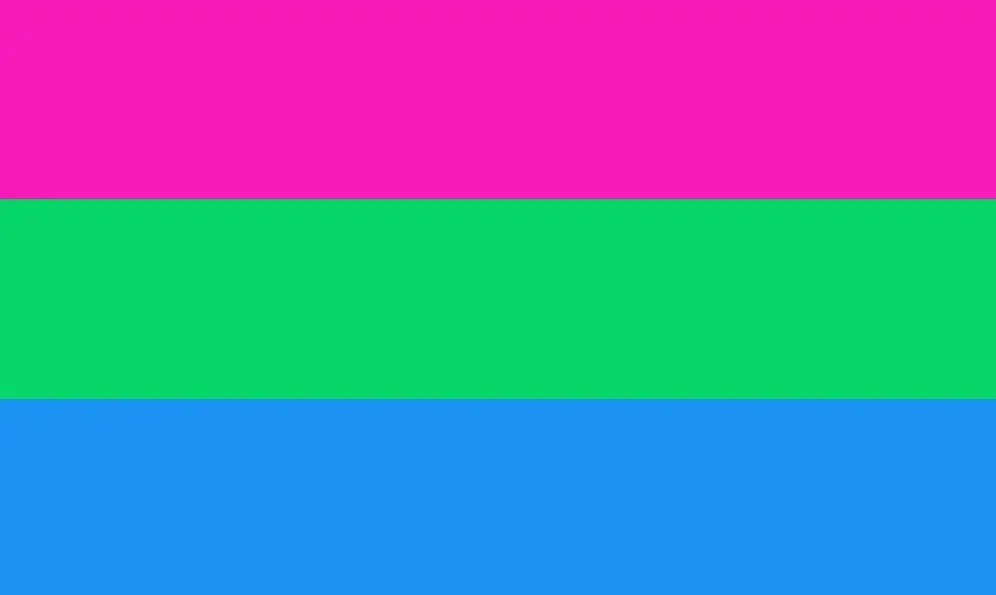We’re all aware of the classic rainbow flag when it comes to LGBTQ+ flags, but have you heard of the Polysexual Flag? We spotted quite a few at London Pride this year, read on to find out all you need to know, and perhaps you might be holding one next year.
What is the Polysexual Flag?
The polysexual flag is a flag that represents people who are attracted to multiple genders, but not all genders. The flag was created in 2012 by a Tumblr user named pansexualoctopus.
The flag consists of three horizontal stripes: pink, green, white, and blue. The pink stripe represents attraction to women, the green stripe represents attraction to non-binary people, and the blue stripe represents attraction to men.
The polysexual flag is often used by people who identify as polysexual, which is a term for people who are attracted to multiple genders, but not all genders. Polysexual people may be attracted to men, women, non-binary people, or any combination of genders.
The polysexual flag colours are a symbol of pride and visibility for polysexual people. It can be used to show support for polysexual people and to raise awareness of polysexuality.

History of the Polysexual Flag
The polysexual flag was created in 2012 by a Tumblr user named pansexualoctopus. The user created the flag in response to the pansexual flag, which they felt did not accurately represent their own identity. The user wanted a flag that represented their attraction to multiple genders, but not all genders.
The polysexual flag quickly became popular among polysexual people. It is now one of the most common symbols of polysexuality.
Related article: The history and origin of the lesbian flag
Meaning of the Polysexual Flag
The colours of the polysexual flag have the following meanings:
- Pink: Attraction to women
- Green: Attraction to non-binary / enby people
- Blue: Attraction to men
The Polysexual flag colours meaning are – Pink represents an attraction to women, green represents an attraction to non-binary / enby people, and blue represents an attraction to men
The polysexual flag is a symbol of pride and visibility for polysexual people. It can be used to show support for polysexual people and to raise awareness of polysexuality.
Variations of the Polysexual Flag
There are several variations of the polysexual flag. Some variations have different colours or different arrangements of colours. Other variations have additional stripes or symbols.
The most common variation of the polysexual flag is the three-stripe flag described above. However, there are many other variations that are also used by polysexual people.
How to Use the Polysexual Flag
The polysexual flag can be used in a variety of ways. It can be flown at pride events, displayed in homes and businesses, or worn as clothing or accessories. The flag can also be used on social media or in other online contexts.
The polysexual flag is a symbol of pride and visibility for polysexual people. It can be used to show support for polysexual people and to raise awareness of polysexuality.
Conclusion
The polysexual flag is a symbol of pride and visibility for polysexual people. It is a reminder that polysexual people exist and that their identities are valid. The polysexual flag is a powerful tool that can be used to raise awareness of polysexuality and to promote acceptance of polysexual people.
If you have any further questions about the polysexual flag, please add them to the comment section below, or let us know if you’ve decided to wear one for next pride.
Team Nonchalant x


